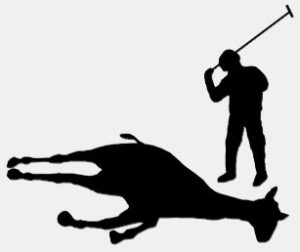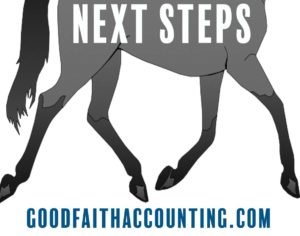July 24, 2018
How to Ride a Dead Horse
The Humor Department
From our years of service with non-profits and churches, we’ve realized that sometimes you just need to laugh. To look beyond your chaos and find that some things we are trying to do really are silly.
There may come a time in your organization when something has run its course, or its time has passed, but for some reason it can’t be let go. Some may think they are doing your organization a great service by preserving the past, but really, you might be falling into the trap of Riding a Dead Horse. Here’s how that can happen…
How to Ride a Dead Horse
Ancient Rabbinic wisdom states that when you discover you are riding a dead horse (or camel), the best strategy is to dismount. However, church boards and committees often try other strategies with dead horses, including the following:
- Buying a stronger whip.
- Changing riders.
- Saying things like, “This is the way we have always ridden this horse.”
- Arranging to visit other sites to see how they ride dead horses.
- Increasing the standards for those who ride the dead horse.
- Appointing a committee to study the dead horse.
- Waiting for the horse’s condition to improve from this temporary downturn.
- Providing additional training to increase riding ability.
- Passing a policy declaring, “This horse is not dead.”
- Blaming the person who sold you the horse.
- Acquiring additional dead horses for increased speed.
- Declaring that, “No horse is too dead to beat.”
- Providing additional funding to increase the horse’s performance.
- Commissioning a study to see if lay-leaders can ride it cheaper.
- Removing all obstacles in the dead horse’s path.
- Taking bids for a state-of-the-art dead horse.
- Declaring the horse is “better, faster, and cheaper” dead.
- Revising the performance requirements for horses.
- Saying the horse was cheaper than one that was “alive.”
- Asking for increased donations. (Any excuse will do.)
And if all else fails:
21. Declare that resurrecting the dead horse is the congregation’s primary mission.

You might also like: other posts on Church Administration
Next Steps
Everyone can fall into the trap of “this is how it’s always been.” It’s easy. What isn’t easy is looking at that horse and declaring him dead and figuring out what the next step is. Sometimes the best thing an organization can do is let go of something in the past and bury the horse.
If you find you are currently riding a dead horse, reach out to us today. You are not alone. Find Miller Management at one of these training events near you! Or visit our Training + Consulting page to see in which areas we can provide guidance.



Stay Connected